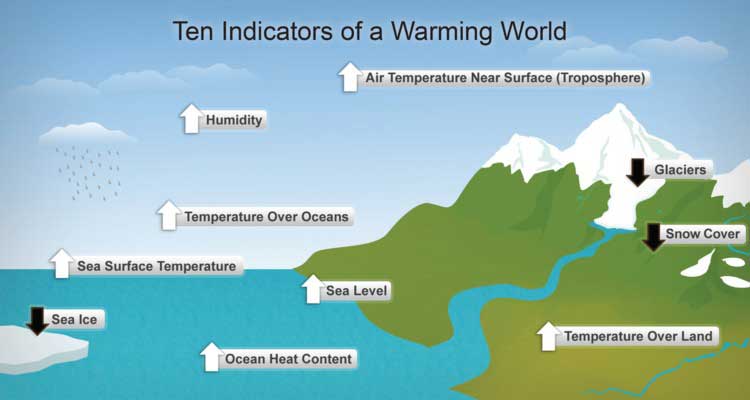- SDG 14 is ‘Life Below Water :Plastic pollution. Increasing levels of debris in the world’s oceans are having a major environmental and economic impact. Marine debris impacts biodiversity through entanglement or ingestion
- SDG 14 is ‘Life Below Water :Coastal waters are deteriorating due to pollution and eutrophication. Without concerted efforts, coastal eutrophication is expected to increase in 20 percent of large marine ecosystems by 2050.
- SDG 14 is Life Below Water :Ocean acidification has increased significantly in recent decades. Open Ocean sites show current levels of acidity have increased by 26 per cent since the start of the Industrial Revolution.
- SDG 14 is Life Below Water :Oceans absorb about 30 per cent of carbon dioxide produced by humans, buffering the impacts of global warming.
- SDG 14 is Life Below Water :Oceans provide key natural resources including food, medicines, biofuels and other products. They help with the breakdown and removal of waste and pollution, and their coastal ecosystems act as buf
A Ray Of Hope In The Darkness Ahead

The Intergovernmental Panel on Climate Change (IPCC) has said that without a radical transformation of energy, transportation and agriculture systems, the world will hurtle past the 1.5° Celsius target of the Paris climate agreement by the middle of the century, with dramatically increased risks to human civilization and the life sustaining ecosystems on Earth.
The Special Report on Global Warming of 1.5° C will be a key scientific input into the Katowice Climate Change Conference in Poland in December, when governments review the Paris Agreement to tackle climate change. The new assessment report by the IPCC makes it clear that limiting global warming to 1.5° C would require rapid, far-reaching and unprecedented changes in all aspects of society.
The sobering new report has some stark choices for human civilization, and some of the authors believe the catastrophic climate change can yet be avoided. “The good news is that some of the kinds of actions that would be needed to limit global warming to 1.5° C are already underway around the world, but they would need to accelerate,” said Valerie Masson-Delmotte, Co-Chair of Working Group I.
The report highlights the climate change impacts that could be avoided by limiting global warming to 1.5° C compared to 2° C, or more. For instance, by 2100, global sea level rise would be 10 cm lower with global warming of 1.5° C compared with 2° C. The likelihood of an Arctic Ocean free of sea ice in summer would be once per century with global warming of 1.5°C, compared with at least once per decade with 2° C. Coral reefs would decline by 70-90 percent with global warming of 1.5°C, whereas over 99 percent would be lost with 2° C.
The report finds that limiting global warming to 1.5° C would require “rapid and far-reaching” transitions in land, energy, industry, buildings, transport, and cities. Global net human-caused emissions of carbon dioxide (CO2) would need to fall by about 45 percent from 2010 levels by 2030, reaching ‘net zero’ around 2050. This means that any remaining emissions would need to be balanced by removing CO2 from the air.
It is evident that rapid action is essential and the next ten years will be crucial. If the planet continues to warm at the current rate of 0.2℃ per decade, the 1.5° C threshold will be reached around 2040. At current emissions rates, there is a high probability that we will have used up our entire carbon budget for limiting warming to 1.5° C within the next 10 to 14 years.
The report also emphasizes the need to significantly reduce short-lived climate pollutants, including methane, black carbon and hydrofluorocarbons, or HFCs. The report's summary for policymakers’ points to three industries in particular for reducing short-lived climate pollutants: energy, agriculture and waste.
Indian co-author of the IPCC report Joyashree Roy has been quoted by the media, “We have found that the burden of global warming will fall disproportionately on the poor who are not responsible for the problem if we don’t meet the 1.5° target. The most affected areas will be mega cities, coastal areas, high mountain and small island regions. There will also be heat stress in cities and air quality will detriorate due to high fossil fuel use like coal, diesel, woods and others.”
The report also finds that, in the likelihood that governments fail to avert 1.5° C degrees of warming, the world could overshoot that target, and then work to bring it back down through a combination of lowering emissions and deploying carbon capture technology. In such a scenario, some damage would be irreversible, the report found, including the total die-off of coral reefs. However, the sea ice that would disappear in the hotter scenario would return once temperatures had cooled off.
The landmark report from the United Nations’ scientific panel on climate change paints a dire picture of the immediate consequences of climate change, far worse than previously thought. The authors of the report stated that avoiding the most serious damage requires transforming the world economy within just a few years. But while they conclude that it is technically possible to achieve the rapid changes required to avoid 1.5° C degrees of warming, they concede that it may be politically unlikely. Unless there is an unprecedented mass mobilization of people demanding decisive action.
Rituraj Phukan
